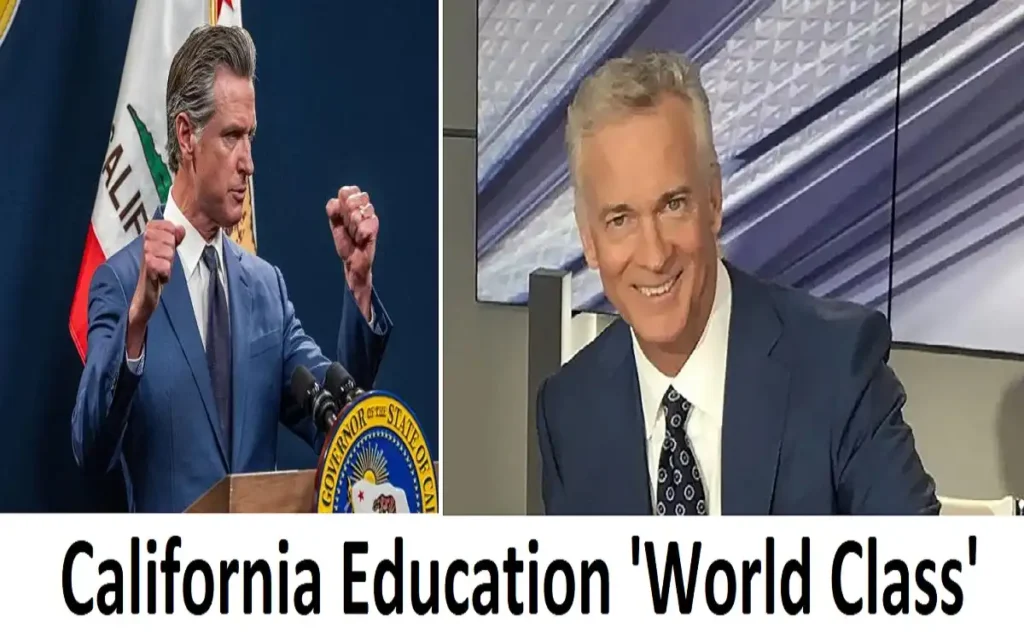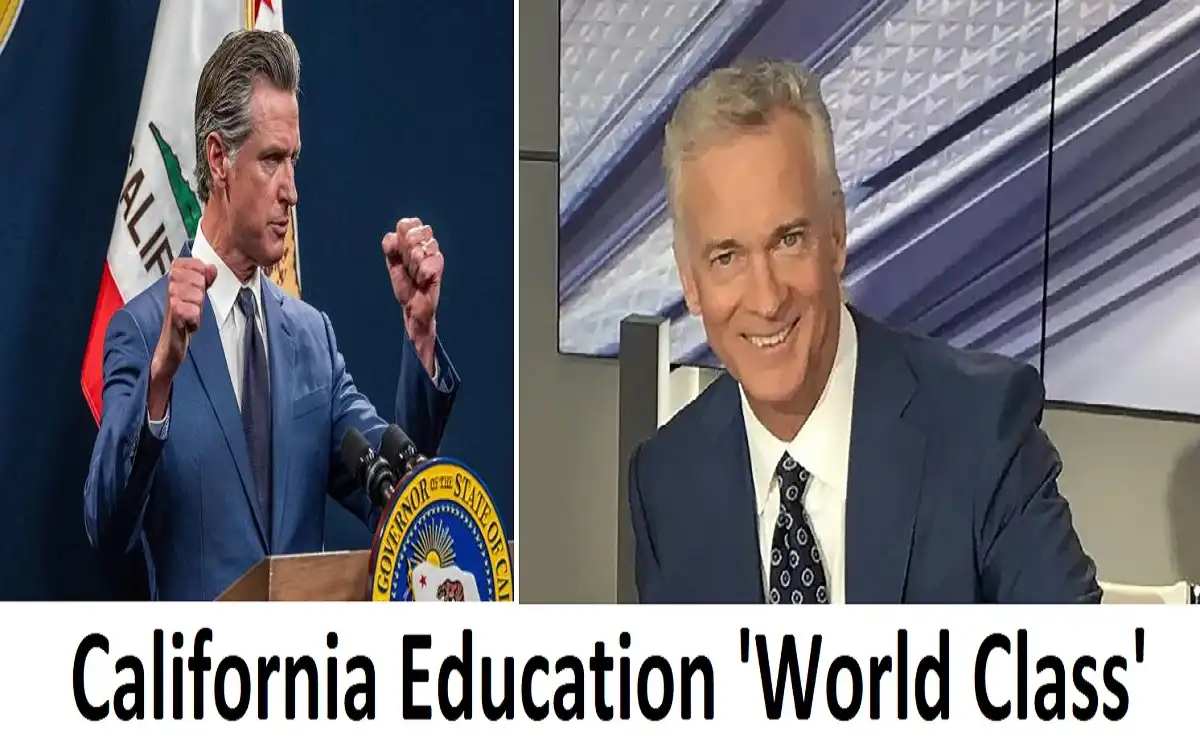|
Getting your Trinity Audio player ready...
|
In a recent televised exchange that has ignited California World Class Education debates across political and educational circles, Fox News anchor Trace Gallagher confronted California Governor Gavin Newsom over his repeated assertions about the state’s “world class” education system. The heated discussion, which aired on June 25, 2024, has brought renewed attention to the ongoing challenges facing California’s public schools and the discrepancies between political rhetoric and on-the-ground realities[1].
Gallagher’s Critique California World Class Education
During the interview, Gallagher cited recent data from the National Assessment of Educational Progress (NAEP), often referred to as “The Nation’s Report Card,” which painted a less rosy picture of California’s educational achievements. According to the 2023 NAEP results, California ranked 40th in fourth-grade reading and 38th in eighth-grade math among all states[2]. These statistics stand in stark contrast to Governor Newsom’s frequent characterization of California’s education system as “world class.”

Gallagher pressed the governor, stating,
How can you continue to claim that California’s education is world class when the data clearly shows we’re lagging behind many other states, let alone world standards?
Newsom’s Defense California World Class Education
Governor Newsom, known for his unwavering support of California’s public education system, defended his stance by pointing to recent investments and initiatives. He highlighted the state’s $23.3 billion education budget increase for the 2024-2025 fiscal year, emphasizing that this represents the largest year-over-year increase in California’s history[3].
We’re making unprecedented investments in our schools,
Newsom argued.
From expanding early childhood education to bolstering STEM programs and addressing the teacher shortage, we’re laying the groundwork for a truly world class system. These changes take time to reflect in standardized test scores.
The Reality on the Ground California World Class Education
Despite the governor’s optimism, education experts and teachers’ unions have expressed concerns about the persistent challenges facing California’s schools. Dr. Linda Darling-Hammond, president of the California State Board of Education, acknowledged the state’s progress while also noting areas for improvement.
While we’ve made significant strides in areas like early literacy and college readiness, we still face substantial hurdles in closing achievement gaps and ensuring equitable access to quality education across all communities,
Dr. Darling-Hammond stated in a recent press conference[4].
The California Teachers Association (CTA) has also weighed in on the debate. CTA President Emma Martinez emphasized the need for more than just increased funding.
Additional resources are crucial, but we also need targeted strategies to address issues like overcrowded classrooms, teacher burnout, and the unique challenges faced by our diverse student population,
Martinez said in a statement released following the Gallagher-Newsom interview[5].
Comparative Analysis on California World Class Education
Education policy analysts have pointed out that while California’s overall education spending has increased, the state still lags behind in per-pupil spending when adjusted for cost of living. A recent report by the Education Data Initiative ranked California 17th in the nation for per-pupil spending in 2023, a figure that takes into account the state’s high cost of living[6].
Moreover, California’s student-to-teacher ratio remains one of the highest in the nation, with an average of 22 students per teacher in 2023, compared to the national average of 16[7]. This disparity has been cited as a significant factor in the state’s educational challenges.
Looking Ahead to California World Class Education
As the debate sparked by Gallagher’s questioning continues, it’s clear that California’s education system stands at a crossroads. While Governor Newsom’s administration has demonstrated a commitment to increasing educational funding, critics argue that structural reforms and more targeted interventions are necessary to truly elevate California’s schools to “world class” status.
The coming months will likely see increased scrutiny of California’s education policies and outcomes. With the 2024 NAEP results set to be released later this year, all eyes will be on California to see if the state’s substantial investments begin to translate into measurable improvements in student achievement.
As this story develops, it serves as a reminder of the complex challenges facing public education in America and the often contentious debate over how best to address them. Whether California can live up to Governor Newsom’s lofty characterization remains to be seen, but one thing is certain: the state’s educational future will continue to be a topic of national interest and debate.
For More News Update Visit California News



 топ Казино На Деньги ото Casino Online
топ Казино На Деньги ото Casino Online